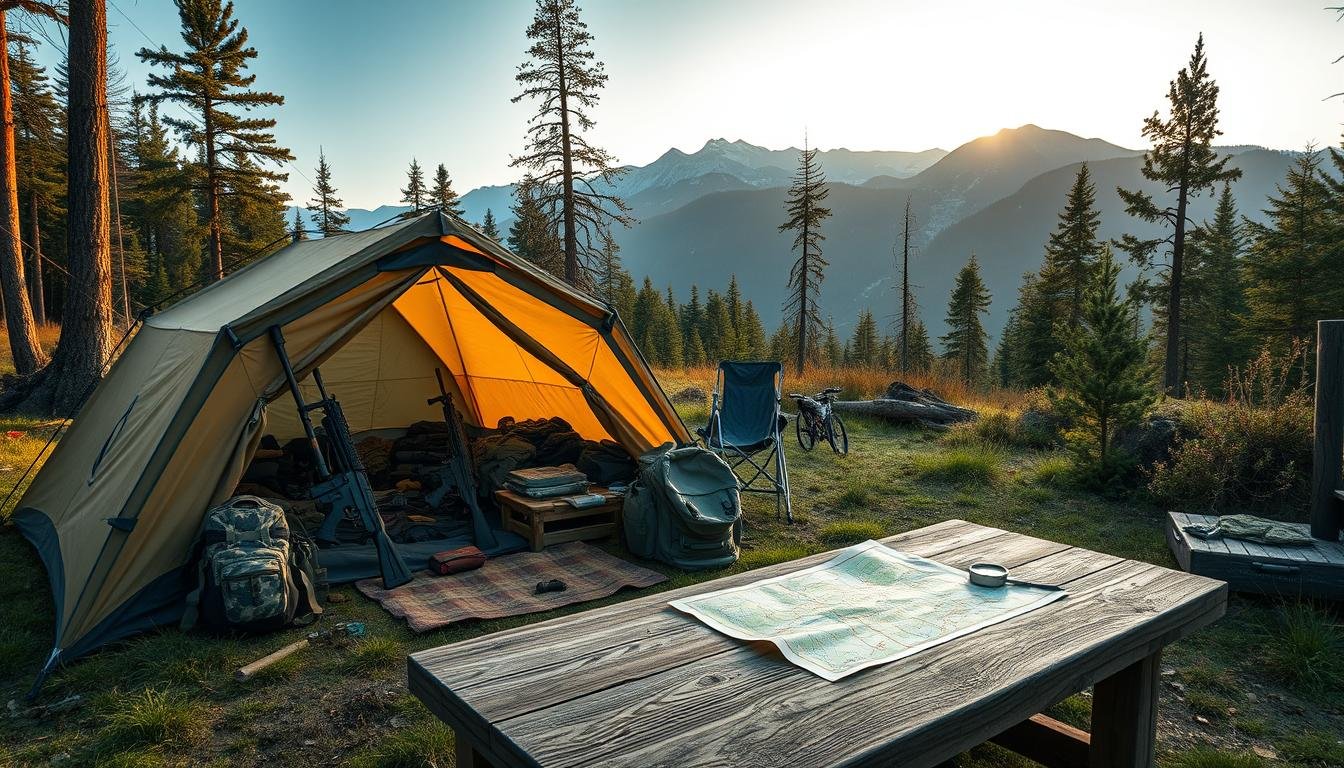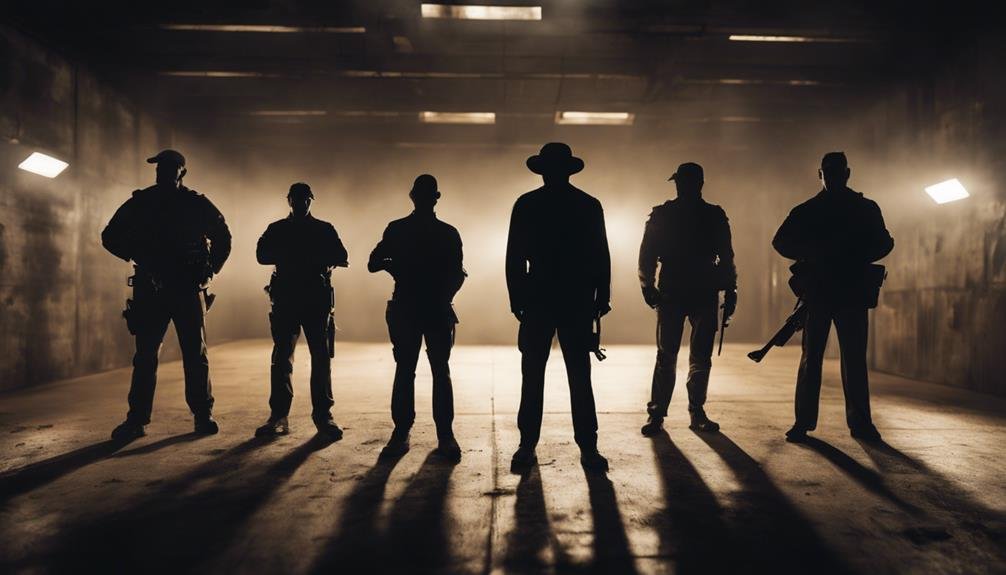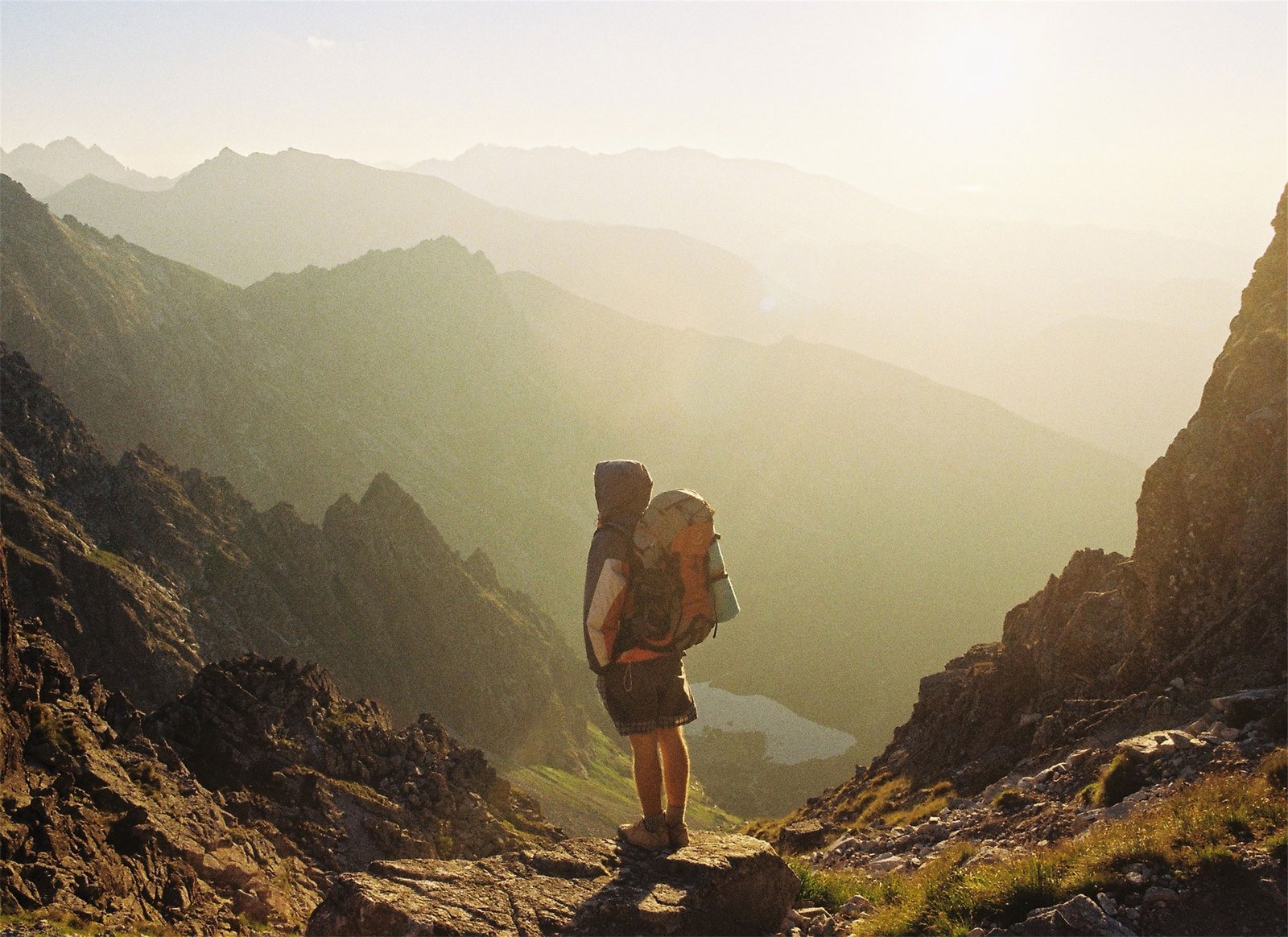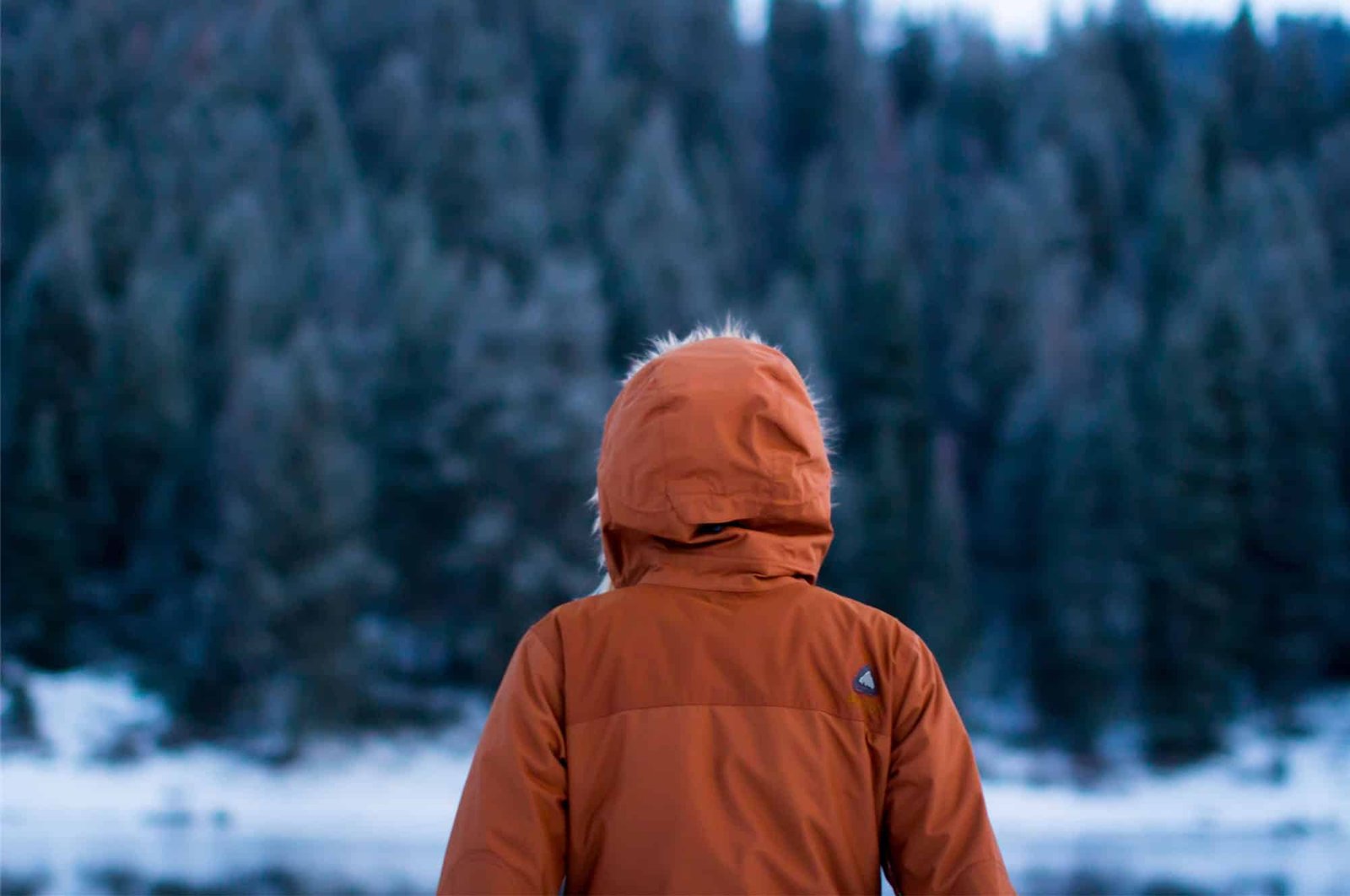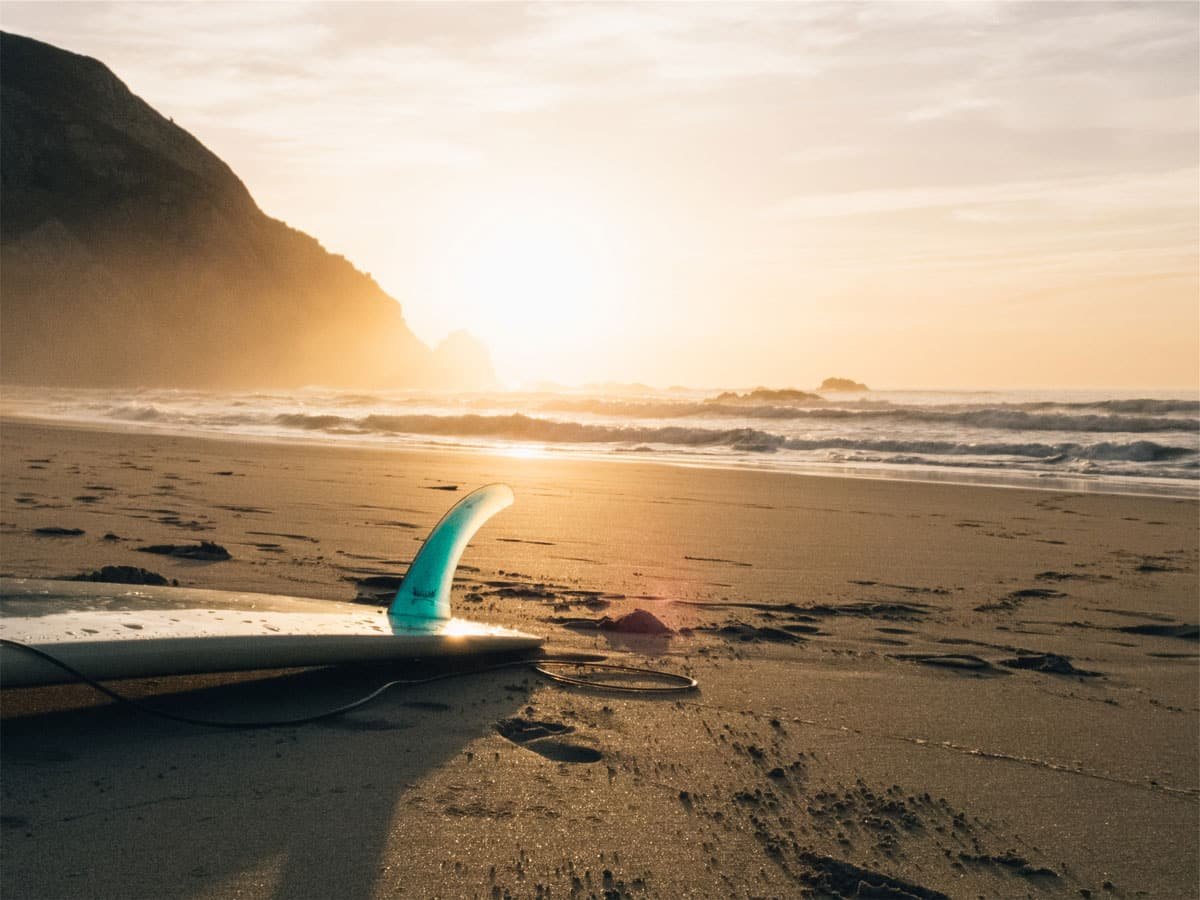Did you know that success rates for pronghorn hunting in rifle units in most locales of the West hover around 75%1? This statistic shows how important it is to prepare well for a big game hunt in the U.S. Whether you’re new to hunting or have years of experience, knowing how to prepare is key to success. It’s not just about the gear or the rules; it’s about making the most of your time in nature.
This guide will cover the must-haves for a successful hunt. We’ll look at everything from understanding the wildlife to the right equipment and rules. By following this checklist, you’ll be ready for your adventure.
Key Takeaways
- Understanding local wildlife and hunting regulations is essential for success.
- Choosing the right time of year can significantly impact your hunting experience.
- Physical and mental fitness plays a critical role in achieving hunting goals.
- Proper gear selection, including clothing and firearms, is vital for a successful hunt.
- Scouting and understanding animal behavior enhance hunting prospects.
- Acclimatization to altitude is often overlooked but is crucial for success on Western hunts12.
Understanding Big Game Hunting
Big game hunting is an exciting and challenging outdoor activity. It needs a lot of knowledge and preparation. Hunters must know about different big game in the US, like elk and black bear. Each animal has its own home, hunting ways, and gear needs.
The Importance of Preparation
Getting ready is key in big game hunting. Hunters must know the rules, the types of big game, and safety tips. A good plan helps beginners, especially when starting with deer, which are easier to hunt3.
Having the right gear, like maps and safety tools, makes hunting safer and more fun3.
Types of Big Game in the U.S.
The US has many big game species. Some of the most hunted are:
- White-tailed deer, the most hunted due to their large numbers.
- Elk, known for their big antlers and tough hunting.
- Mule deer, another exciting challenge for hunters.
- Bighorn sheep, which need special skills and methods.
Each species has its own hunting strategies, based on their habits and homes4.
Seasonal Considerations
Knowing when to hunt is vital for success. Hunting seasons match wildlife breeding times and population changes, varying by state. For example, Arizona’s deer hunting in 2015 was from August to December for guns, and archery-only until January5.
Planning ahead and scouting during the right seasons helps hunters. It lets them see animal behaviors and improve their hunting chances.
How to Prepare for a Big Game Hunt in the US
Getting ready for a big game hunt needs a lot of knowledge and careful planning. Hunters must learn about the game species and their habitats. They also need to know the local hunting regulations and find good hunting locations. Each of these steps is key to a successful hunt.
Researching Game Species and Regions
Knowing the game species you want to hunt is very important. States like Montana, Wyoming, Idaho, and Alaska have many species, including elk, pronghorn, deer, bears, and moose6. Learning about their habitats and behaviors can really help your chances of success. Many hunters do a lot of research before the hunting season starts7.
Understanding Hunting Regulations and Permits
Every state has its own hunting regulations and permits that hunters must follow. This includes getting tags for certain species or buying over-the-counter tags, like in Colorado. Knowing these rules helps you hunt legally and makes your hunt better. Many successful hunters prepare all year to stay up-to-date on strategies and rules7.
Identifying Potential Hunting Locations
Finding the right hunting locations is very important. Using tools like HuntStand can help find areas with lots of game and good water sources6. Hunters should also team up and plan to spend enough time in their chosen locations. In high places, getting used to the altitude is crucial to avoid altitude sickness8.
Creating a Big Game Hunting Plan
Starting a successful big game hunting plan means setting clear goals. Hunters need to decide what they want to achieve, like getting a trophy or just enjoying nature. Knowing what you want helps focus your efforts and makes the hunt more likely to be successful.
It’s also important to understand the animals you’re hunting. Talking to local biologists can help you learn about their habits. This knowledge is key to planning the best time to hunt9. Knowing when animals mate or migrate helps pick the perfect season for your hunt10.
Defining Your Objectives for the Hunt
Whether you’re new or experienced, having clear goals is crucial. Think about what you want to achieve:
- Is it to get a trophy, have meat, or just enjoy nature?
- Which animal do you want to hunt, and where and when?
- Do you want to improve your skills, like shooting better or learning new techniques?
Setting these goals helps make your planning easier and more focused. It guides your decisions during the hunt.
Choosing the Right Time of Year
The best time to hunt can make a big difference. Before you go, check out your campsite, water sources, and good spots to watch animals9. Plan your trip for when animals are most active or migrating11.
Also, pack food that won’t spoil, like nuts or jerky. This keeps you energized during your hunt10.
| Objective | Actions | Timeframe |
|---|---|---|
| Hunting Harvest | Research species, target area | 6 months prior |
| Skill Improvement | Practice shooting, engage in training | 3 months prior |
| Exploration | Research new locations, plan logistics | 1 month prior |
Having a detailed big game hunting plan makes your experience better. It ensures you’ve thought through your goals and timing. This is key to a successful hunt91011.
Essential Gear and Equipment
Knowing the right gear is key to a hunter’s success. This part talks about the best clothing, essential equipment, and the importance of firearms and ammo.
Selecting the Right Clothing
Choosing the right clothing for hunting is crucial for comfort and safety. Hunters should focus on layering with wool for warmth without bulk. In Colorado, hunters must wear 500 square inches of orange for safety12.
It’s also important to stay warm and dry. Hypothermia can happen even when it’s not cold, so picking the right gear is vital12.
Top Gear for Big Game Hunts
The right hunting gear makes hunting better. A well-organized backpack with all you need can make a big difference. The author uses “kits” for quick access13.
Some must-haves include:
- Hydration pack with a Sawyer water filter
- First aid kit and medical supplies
- High-quality game bags and knife for field dressing
- Headlamp with multiple settings for nighttime navigation
- Calorie-packed food for sustained energy, aiming for 2300-2500 calories per day during hunts14.
Using a backpack helps hunters stay longer and carry their catch. This shows how important durable and useful gear is12.
Importance of Firearms and Ammunition
Choosing the right firearms and ammunition is essential. The .270 WSM gun and the right ammo are key for ethical hunting14. Advanced tech like rangefinders and communication devices can also make a big difference14.
Quality knives are important too. They show the need for versatile tools in hunting12.
Physical Fitness for Hunting Success
Being physically fit is key to hunting success, especially in tough outdoor settings. Hunters need to focus on building strength and stamina. This means they must be ready for the hunt’s physical demands.
A good training plan should include cardio, weight lifting, and getting used to the environment. This mix will greatly improve their hunting skills.
Training Regimens for Hunters
Hunters should mix cardio and strength training to boost endurance. It’s advised to spend 70%-80% of their prep time on physical fitness for backcountry hunts15. Working out three times a week helps build stamina and strength15.
Carrying 30-40 pounds in their packs is a good way to prepare for the hunt’s weight15. High-intensity interval training (HIIT) is also beneficial, including burpees, Russian twists, kettlebell swings, and mountain climbers15. Giving 100% effort during these workouts is crucial for maximum results16.
Importance of Acclimatization in High Altitude
Acclimatization is vital for hunters in high-altitude areas, as it lowers heart attack risks17. Unexpected activities, like dragging a deer, can be dangerous for those not prepared16. Starting fitness routines early makes hunting more enjoyable and improves performance17.
Exercises like stair stepping, bench dips, and ab crunches boost core strength and balance. These are crucial for tackling tough terrains17. Adaptation also helps in carrying gear and facing the hunt’s physical challenges.
Mental Preparation Techniques
Mental preparation is key for successful big game hunting. It involves strategies to boost confidence and make better decisions. This part will look at how to build confidence, use visualization, and plan strategies.
Building Hunting Confidence
Starting with past successes is a good way to build confidence. A positive mindset helps hunters stay determined. Spending 10-15 minutes a day visualizing success can greatly improve confidence and decision-making under pressure18.
This practice simplifies complex situations. It allows hunters to stay calm and make quick decisions.
Visualization and Strategy Planning
Visualization is vital for mental prep. It lets hunters mentally practice different scenarios. This helps in creating strong strategies.
Mindfulness meditation for 5-10 minutes boosts awareness and keeps hunters in the moment18. A careful, planned approach to hunting also helps. It emphasizes the importance of safety and managing unexpected situations.
Mental toughness is key to overcoming challenges. Hunters who stay focused and determined often do better than those who rely only on physical strength1920
| Technique | Benefits | Notes |
|---|---|---|
| Visualization Techniques | Enhances confidence and decision-making | Helps in mentally rehearsing scenarios |
| Mindfulness Meditation | Improves focus and awareness | 5-10 minute sessions recommended |
| Breathing Techniques (4-7-8) | Reduces stress and maintains composure | Effective during high-pressure situations |
| Physical Conditioning | Enhances stamina and agility | Important for navigating tough terrain |
Developing Hunting Skills
To succeed in big game hunting, you need to develop key skills. These skills improve your field performance, boost confidence, and ensure safety. They include shooting practice, survival techniques, and navigation.
Practicing Shooting Techniques
Shooting practice is essential for better accuracy and control. Many new hunters, about 60%, think a gun safety course isn’t enough21. They should look for more ways to improve their shooting in safe places, like ranges. Paying attention to stance, grip, and trigger control can greatly affect your hunt’s success.
Survival Skills for Outdoor Scenarios
Knowing survival skills is crucial in unexpected situations. Skills like first aid and emergency procedures help manage risks in the wild. Learning to navigate unfamiliar terrain is also key for safety. Being ready for outdoor challenges where quick thinking and adaptability are needed is vital.
Effective Navigation and Map Reading
Navigation and map reading are vital for finding game and staying safe. Using a compass and map is advised, especially in new areas21. Hunters should also learn to move quietly to avoid scaring game. Scouting for animal signs is important for understanding hunting environments, a critical skill21. Trying different hunting spots can improve your decision-making and strategies22.
The Role of Scouting in Preparation
Scouting is key to hunting success. It helps hunters understand animal behavior and patterns. This leads to better hunting strategies.
Understanding Animal Behavior and Patterns
Knowing animal behavior is vital for hunting. Hunters can spot fresh signs of deer activity. This is important for making smart hunting plans.
Scouting before and after the season might not always show results. For example, one hunter saw only a few does and two small bucks despite scouting efforts23. But, scouting during the season can reveal the best spots. Hunters find fresh signs like scrapes and rubs near food sources23.
Using Technology for Scouting
New scouting technology has changed hunting. Trail cameras let hunters watch big game without being there. This has led to more focus on bigger animals, which could mean more success24.
Scouting is all about putting in the time. Hunters who spend hours scouting have an edge over others24.
| Season | Scouting Focus |
|---|---|
| Early Season | Look for feeding areas |
| Rutting Season | Shift to rut signs like scrapes and rubs |
| Late Season | Concentrate on fresh signs near food sources |
Successful hunting means being adaptable and proactive. Finding the latest signs of animal activity is crucial. It’s the key to a good hunting strategy2324.
Trip Planning and Logistics
Planning a big game hunt needs careful logistics to succeed. It includes packing the right gear, planning your route, and setting up a good base camp. Each step is important for a great experience in the wild.
Packing the Right Equipment
Choosing the right equipment is key. You’ll need weapons, ammo, clothes for different weather, and survival items. It’s also important to think about the weight and how long you’ll be gone.
Bringinging a trophy back can cost a lot, so pack smart to avoid extra fees25. Many hunters bring their weapons, but it’s risky. Make sure to keep your gear safe while traveling25.
Planning Your Route and Base Camp
Planning your route is essential for getting to the hunt site quickly. Knowing the terrain helps you move around better. A secure base camp is also crucial for organizing supplies and resting.
The Western U.S. is great for elk and mule deer, while the Midwest is perfect for whitetail deer26. A good base camp lets you scout the area better. This increases your chances of a successful hunt by giving you valuable insights27.
Communication and Emergency Procedures
Having a good communication plan is vital, especially in remote areas. Devices like the Garmin InReach help keep you connected. Knowing about health risks, like food and water pathogens, is also important for staying safe25.
Having emergency plans ready is crucial. This ensures you’re prepared for any unexpected challenges.
Conclusion
This guide shows that careful preparation is essential for big game hunt success. Knowing about deer and black bears, choosing the right gear, and staying fit are all important. The right clothes and boots are crucial, especially in tough terrains like Northern Saskatchewan28.
It’s not just about the gear; being mentally ready is also key. Mindfulness and visualization can help manage the hunt’s pressure. Knowing local laws and ethical hunting practices, along with good scouting, can increase your chances of success29.
By focusing on fitness, gear, and planning, hunters can make their wild adventures more rewarding. Good preparation turns hunting into a meaningful experience. It helps hunters connect with nature and enjoy the thrill of the hunt.

